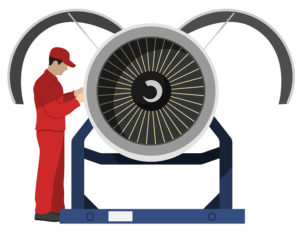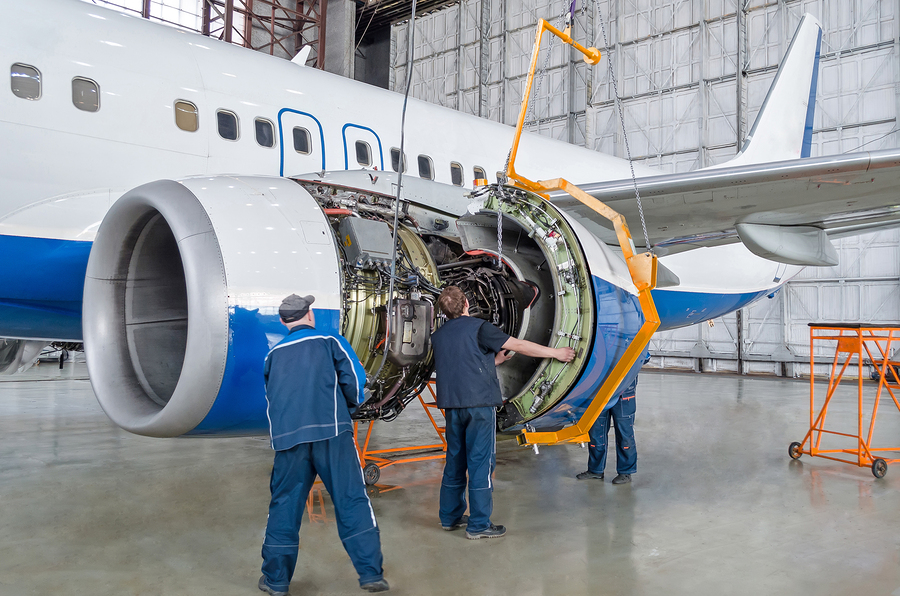
Millennials ruin everything — at least that’s what news headlines might have you believe. The truth is, millennials aren’t harbingers of doom for traditional industries — they’re disruptors. The industries falling by the wayside aren’t being banished by millennials, they’re just failing to adapt to their needs. It won’t be long before BizAv faces a make-or-break reckoning with millennials. Thankfully, the industry is already undergoing early-stage transformations to accommodate them.
Millennials embrace BizAv on their terms
Millennials are typically defined as people born in the early-to-mid 1980s, who grew up in the 1990s and entered the workforce in the mid-to-late 2000s. Now, this group is starting to settle into their careers, achieving higher positions in companies and assuming more responsibility for how modern businesses run.
With millennials at the wheel as decision-makers, business is changing. Millennials have embraced private aviation, but on their own terms. They’re more likely to charter a private aircraft but less likely to pay exorbitant fees to do so. This example and many others have put BizAv in a position for change.
A look at the disruptors
What do millennials want from BizAv? All it takes is one look at the industry trends driving it (and holding it back) to see what their priorities are:
- Fractional flights — As decision-makers, millennials are less likely to make the expensive purchase of a new corporate jet. A cost they’re more willing to absorb is fractional ownership of a jet. Fiscal responsibility meets accessibility to flights. And with flexibility, productivity, and timeliness the top three factors millennials look for in flying, fractional flights are a natural fit.
- Flying as a service — Similar to fractional flights, on-demand flights or flying as a service (FaaS) is ripe for potential in the new BizAv market. Following software as a service (SaaS) models, FaaS provides on-demand service where and when it’s needed, without the massive costs of full-time jet ownership.
- Skiplagging — Nothing shows the disdain for high-cost flights and complicated commercial logistics like the skiplagging trend. This practice involves booking a flight with multiple layovers, with one of the layovers being the ultimate destination. By skipping the last leg of the flight, passengers get to their destination cheaper.
- Jet cards — Customization and flexibility are two traits millennials demand more than anything else. They want solutions that fit their problems. Jet cards have proven themselves as a tailorable solution to the problem of chartering flights. With hundreds of options and infinitely customizable variables, jet cards have made BizAv more accessible to millennials.
Millennials are overwhelmingly driving change in the BizAv industry. They’re doing so by demanding a higher caliber of service, for a lower rate, with more options. It’s the same way they’ve disrupted most other traditional industries.
BizAv has time to adapt
 Sweeping change to BizAv won’t come overnight — but make no mistake, it’s already begun. Industry leaders have been keen to recognize it. Companies such as Surf Air, Wheels Up, JetSuiteX, and others have positioned themselves to meet the demands of millennials booking private charters. Their entire value proposition focuses on meeting the criteria millennials have set down: customization, affordability, convenience, and timeliness.
Sweeping change to BizAv won’t come overnight — but make no mistake, it’s already begun. Industry leaders have been keen to recognize it. Companies such as Surf Air, Wheels Up, JetSuiteX, and others have positioned themselves to meet the demands of millennials booking private charters. Their entire value proposition focuses on meeting the criteria millennials have set down: customization, affordability, convenience, and timeliness.
Millennials are still rising the ranks of the workforce and accumulating personal wealth. We may still be as far off as a decade from seeing their real impact on BizAv. But, as is the case with all forms of change, early adaptation is proactive. It’s why many private air charter companies have already begun answering the demands of their growing millennial customer base.

If your business has recognized the need for a private aircraft, the question becomes whether to buy or lease one. There are pros and cons to both, dictated primarily by your business’s access to capital and its attitude toward having an asset (or liability) of this magnitude on the balance sheet. Should you buy an aircraft or lease one? It depends!
The case for leasing
Did you know that more than a third of all aircraft operated by airlines are leased? In the past decade, there has actually been a rising trend in aircraft leases, as opposed to purchases. Even buyers who have the cash on hand to purchase a jet are choosing to lease. Why?
Leasing an aircraft has several clear benefits, chief among them affordability. Not only do you forgo the upfront cost of purchasing a jet outright, but the cost of ongoing ownership is also much lower. This means more cash on hand in the immediate, as well as over the long-term. Businesses can take the capital they may have spent on an aircraft and put it to work elsewhere, growing the business or paying down debt.
Speaking of debt, buying a jet outright automatically adds a burden to the balance sheet. Because aircraft depreciate so quickly, your aircraft will weigh down the wrong side of the books as a liability if you purchase outright. Leasing keeps it off of the balance sheet.
Another bonus to leasing? You’re not stuck with a jet you don’t want. Depending on whether you choose a capital or operating lease, it’s easy to walk away from a jet when the terms of your lease are up. No finding a buyer; no writing off depreciated costs.

Why to buy?
There’s a saying: “If it floats or flies, rent it.” This is in reference to the high cost of ownership that comes with boats and aircraft. However, what’s not represented in that quippy saying is the major convenience that comes in addition to this cost. Sure, you’ll spend more to maintain your aircraft, but you’ll also get maximum convenience from it.
The first and best reason to buy a jet is to turn it into a revenue stream. Hiring a jet management company and chartering your jet privately is a great way to make money for your business or recoup the cost of your jet. Because you financially own the aircraft, any money it makes flows directly into your books.
 Owning a jet that makes money also means being able to list it as an asset on your balance sheet, not just a costly liability. Couple this with depreciation write-downs over time and you’ve got an asset that keeps getting more and more valuable to your operations! And if you’re ever in a tight spot and need the cash, there’s always a secondary sales market for well-maintained aircraft.
Owning a jet that makes money also means being able to list it as an asset on your balance sheet, not just a costly liability. Couple this with depreciation write-downs over time and you’ve got an asset that keeps getting more and more valuable to your operations! And if you’re ever in a tight spot and need the cash, there’s always a secondary sales market for well-maintained aircraft.
Which is right for you?
Do you have $3-90 million to put into a jet? How about a plan for turning your investment into a revenue stream? Is there any exit strategy for your jet if you no longer need or want it?
Observing your situation and understanding the pros and cons of both leasing and buying an aircraft can help level out the landscape for making your decision. It all depends on your financial stability, demand for private air travel, and time horizon for ownership.
The expert jet brokers at L & L International are here to help you acquire the perfect jet. Need to sell your jet? We can assist with that, too.
Contact the private aviation professionals online, at
sales@L-Lint.com, or at
+1 (305) 754-3313.
Like any other mode of transportation, aircraft are subject to inspections and testing to ensure safety and general compliance. Jets require focused, specialized inspections that check everything from equipment function to regulatory compliance to the condition of the aircraft before a sale. Every inspection is important — and none of them are optional.
Get to know the various aircraft inspections
Aircraft are subject to several key types of inspections, which are used to ensure their safety. The Federal Aviation Administration (FAA) requires the following aircraft inspections to ensure that jets remain in working order and meet applicable safety standards. These inspections don’t only promote safer aviation, they also improve compliance with guidelines concerning emissions, technology, and intended aircraft usage.
- 100-hour inspection — Any aircraft that’s used to give instruction to or carry any person, other than a crew member, requires a 100-hour inspection. As the name implies, this type of inspection occurs after every 100-hour interval the aircraft is in service.
- Annual inspection — The FAA requires all aircraft to undergo an annual inspection. Except for a few select cases, you’re not permitted to operate any aircraft unless it has received an annual inspection within the preceding 12 calendar months. A mechanic with an Inspection Authorization (IA) from the FAA must complete this inspection.
- Progressive inspection — A progressive inspection offers flexibility to owners of high-use aircraft. These inspections take place in shorter intervals, periodically, rather than in a single comprehensive inspection. Aircraft owners who wish to minimize downtime with progressive inspections must request permission from the FAA.
- Special inspections — Several major systems and parts in an aircraft require special attention to ensure consistent, safe operation. Special inspections of the altimeter and transponders require consideration every 24 months, and every 12 months an inspection of installed emergency locator transmitters must be done.
Keeping your aircraft on a routine schedule with these inspections planned far in advance will help you avoid various fines, fees, and compliance issues.
Scheduling inspections
 Timely inspections are essential for maintaining FAA compliance. Failing to meet strict inspection guidelines leaves you vulnerable to fees and citations that can prevent you from operating your aircraft.
Timely inspections are essential for maintaining FAA compliance. Failing to meet strict inspection guidelines leaves you vulnerable to fees and citations that can prevent you from operating your aircraft.
To avoid the cost, inconvenience, and risks associated with delayed inspections, it’s important to be as consistent as possible with all of your required inspections. Resolve any identifiable issues found during an inspection as quickly as possible to maintain compliance.
The best way to maintain a consistent inspection schedule and to achieve timely aircraft repairs is to establish a relationship with a company that offers comprehensive inspections, maintenance, and repairs. By working with the same company regularly, you benefit from consistent service, uniform records, and transparent communication.
Regardless of whether you need an aircraft inspection or you’re looking for a new jet, a consultation with a reputable professional is the best place to start.
The expert jet brokers at L & L International are here to help you acquire the perfect jet. We pride ourselves on our extensive knowledge of the aviation industry and our commitment to exceptional customer service. Need to sell your jet? We can assist with that, too.
Contact the private aviation professionals online, at
sales@L-Lint.com, or at
+1 (305) 754-3313.


 Sweeping change to BizAv won’t come overnight — but make no mistake, it’s already begun. Industry leaders have been keen to recognize it. Companies such as Surf Air, Wheels Up, JetSuiteX, and others have positioned themselves to meet the demands of millennials booking private charters. Their entire value proposition focuses on meeting the criteria millennials have set down: customization, affordability, convenience, and timeliness.
Sweeping change to BizAv won’t come overnight — but make no mistake, it’s already begun. Industry leaders have been keen to recognize it. Companies such as Surf Air, Wheels Up, JetSuiteX, and others have positioned themselves to meet the demands of millennials booking private charters. Their entire value proposition focuses on meeting the criteria millennials have set down: customization, affordability, convenience, and timeliness.



 Timely inspections are essential for
Timely inspections are essential for